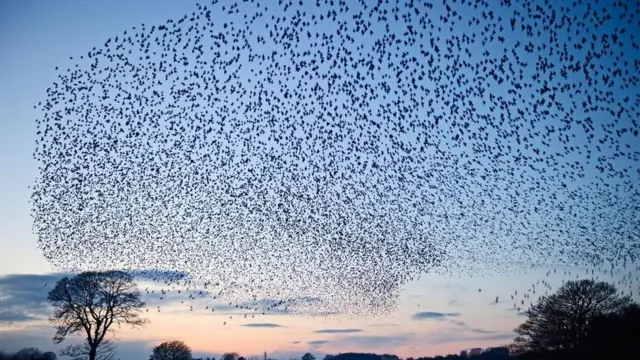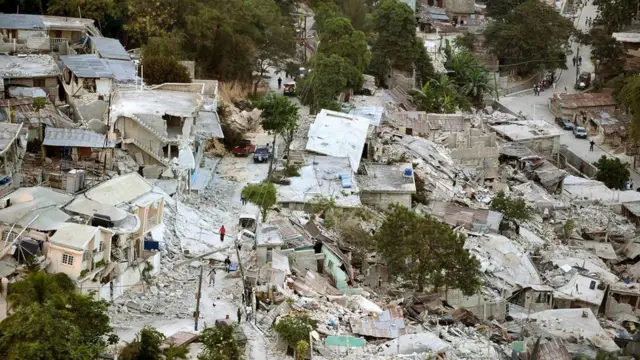The next generation of drones will enter the "fleet" era
Release time:
Aug 02,2024
What kind of picture do you have in mind when thinking about drones? A single remote-controlled toy with a propeller, or a large military drone? Soon, these images may change a lot: drones are getting smaller, manufacturing costs are falling, they can fly autonomously, and form groups of hundreds, or even thousands, like a flock of birds.

Image source, Getty Images
What kind of picture do you have in mind when thinking about drones? A single remote-controlled toy with a propeller, or a large military drone? Soon, these images may change a lot: drones are getting smaller, manufacturing costs are falling, they can fly autonomously, and form groups of hundreds, or even thousands, like a flock of birds.
Such a group is called a "fleet". Put enough drones together, and they can outperform humans in many ways. They can save your life or become a combat unit that kills enemies on the battlefield.

Image source, Alamy
Why is the drone fleet so important?
First, on the battlefield, they can outperform military weapons and technology that have been in use for decades. Imagine this: in a crowded city, formations of small quadcopters can gather intelligence everywhere; tank battalions can be crushed by miniature attack drones coming in from all directions; at sea, thousands of small drones can mop up warships. While many will be shot down, there will always be some that will slip through the net, destroy the radar and leave the warship defenseless.
In addition, there is no leader or commander in the fleet; a drone fleet is a cluster, a self-organizing system in which all elements are equal. The fleet could allow drones to efficiently search an area, or fly together without colliding. And only one operator is needed to control the entire fleet.
But drone fleets will also appear in many scenes, such as rock concerts, barn yards and so on.
So, will we begin to see drone flocks in our daily lives?
Right. In fact, you may have seen it.
Earlier this year, a fleet of 300 drones combined to look like the American flag during Lady Gaga's Super Bowl halftime show, lighting up the night sky. And Intel is promoting their "meteor" drone fleet as an alternative to fireworks. China's Yihang is the record holder for the largest drone fleet, with 1000 drones forming a map of China and the word "Fu" in a spectacular New Year show.
A fleet of drones can also easily perform low-cost inspections of pipes, chimneys, power lines and industrial plants.
Drone fleets can even show off on farms. They can spot plant pests and diseases and help manage water, or they can work together to cover an area for precise spraying of pesticides and herbicides.
University Nikolaos Papanikolopoulos of the Centre for Distributed Robotics at the University of Minnesota is working on solar-powered drones that could eventually enable low-cost surveys of large areas of farmland.
Their role may include early detection of nitrogen deficiencies, plant diseases and the completion of rational management of water resources, "Papanike Klopros said."
What else?
While drones have been used in rescue operations for many years, sending in smaller drone fleets could save more lives.
The Micro Air Vehicle Laboratory at the University of Delft is developing a fleet of "pocket drones" small enough to fit in the palm of your hand. They can fly indoors, search inside when buildings are so damaged that rescuers cannot enter, and will disperse to find survivors after disasters such as earthquakes.
Researchers at Loughborough University (Loughborough University) have built a system to aid mountain search and rescue using a team of 10 small hand-launched drones. The drone is equipped with a thermal imaging camera, which can easily locate the missing people on the mountain and communicate with each other to ensure coverage of the entire area.

Image source, Getty Images
Which militaries are developing drone fleets-and why?
More than one superpower is developing drone fleet technology.
Take the United States, which recently launched 103 small "Perdix" drones from F/A-18 jet fighters. The drones weighed several hundred grams and were dropped from a spreader normally used to release flares. The Perdix drone, created through 3D printing technology, is a one-off, designed to suppress enemy air defenses by acting as a decoy or jammer or by locating radar in order to destroy it.
The Navy also plans to develop fleets of drones that cost less than one missile. They are developing software that allows fleets to be dispersed into subgroups, each performing specific tasks, or for new drones to join the fleet seamlessly.
Another participant is China. China has long been a leader in civilian small drones. DJI (DJI) alone accounts for about 70% of the global market. Now the Chinese military is studying what they can do with this new technology. At an aerospace exhibition in December, the state-owned China Electronics Technology Corporation (CETC) displayed a video of nearly 70 drones flying together. These drones fly in formation and cooperate on intelligence-gathering missions. These drones can also cooperate to carry out "saturation attacks" on enemy missile launchers ". They swooped down from different directions at the same time-too many defensive weapons to stop them.
Perhaps the most ambitious plan is for the United States Marine Corps. One of their projects is the use of a range of drones on land, at sea and in the air. They could be the first wave of strikes before the army lands on the beach. Drones will conduct reconnaissance, locate enemy positions, and possibly launch attacks. The fleet can also defend against attacks by enemy drone fleets. To explore this direction, the Marine Corps is arranging fleet-to-fleet military exercises. (They have designed drones to capture other drones.)
These small drones can also be spies, scouts or intelligence gatherers. The Defense Advanced Research Projects Agency (Darpa), the Pentagon's advanced science agency, is imagining having infantry have their own fleet of drones for reconnaissance, especially in urban areas and inside buildings.
Stephen Crampton (Stephen Crampton) of Swarm Systems said: "250 small aircraft must occupy six city blocks. These aircraft may organize themselves into sub-clusters and provide useful information, such as 'tell us the threat to our position '."
So, what is the future of the drone fleet?
UAV fleet technology is still in its infancy. But it is developing rapidly.
In theory, the fleet could defeat any existing weapon and provide firepower with sufficient precision to cause mass destruction. Their impact may be comparable to the invention of the machine gun: without its own drone swarms, any army would be quickly defeated on the battlefield. By then, whoever has the largest and strongest drone fleet will win the war.
But the battlefield is far from the only place we will see a fleet of drones. In fact, they may one day enter our daily lives.
In the long run, if the predictions of researchers at the Wyss Institute at Harvard University are correct, small drones could become as much a part of our environment as insects. The Wisconsin Research Institute's RoboBee project is developing a small drone that is smaller than a paper clip and weighs less than a tenth of a gram. With bee populations declining, thousands of RoboBee small drones could be used to monitor the weather, monitor and even pollinate crops.
In the future, please pay attention to the micro-drone fleet everywhere. You know, they now have a large following, including farmers and Miss Gaga.
Key words:
Related News
Drones: from consumer to professional
Remote Sensing UAV: "Elf" Great Use
Focus on consumer drones on the battlefield
Shenzhen UAV Industry Enters Flower Age, More than 1730 Enterprises Output Value 96 billion Yuan
Message consultation
Column navigation
Contact Us
Address: Rongxin Center, Haicang District, Xiamen City, Fujian Province
Telephone: 86 18350212718
Mobile: 86 18350212718
E-mail:athena@enjoyoriginal.com
Website:www.enjoyoriginal.com
Copyright©2024 Fujian ORIGINAL Import and Export Co., Ltd. | Business License | SEO Tags | city substation | Powered by:www.300.cn






